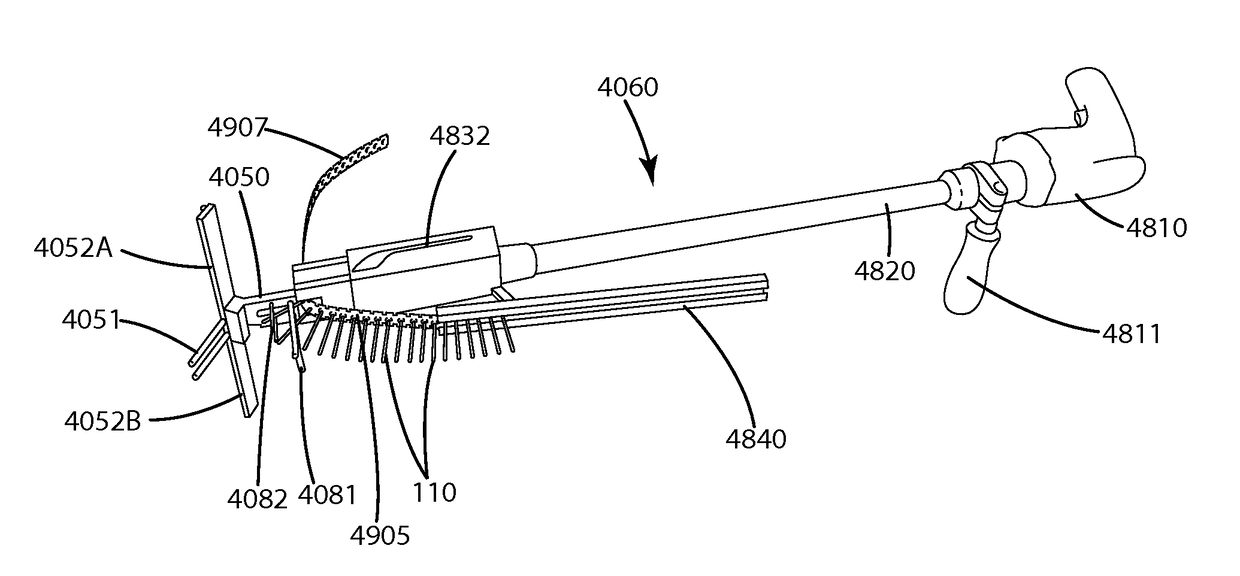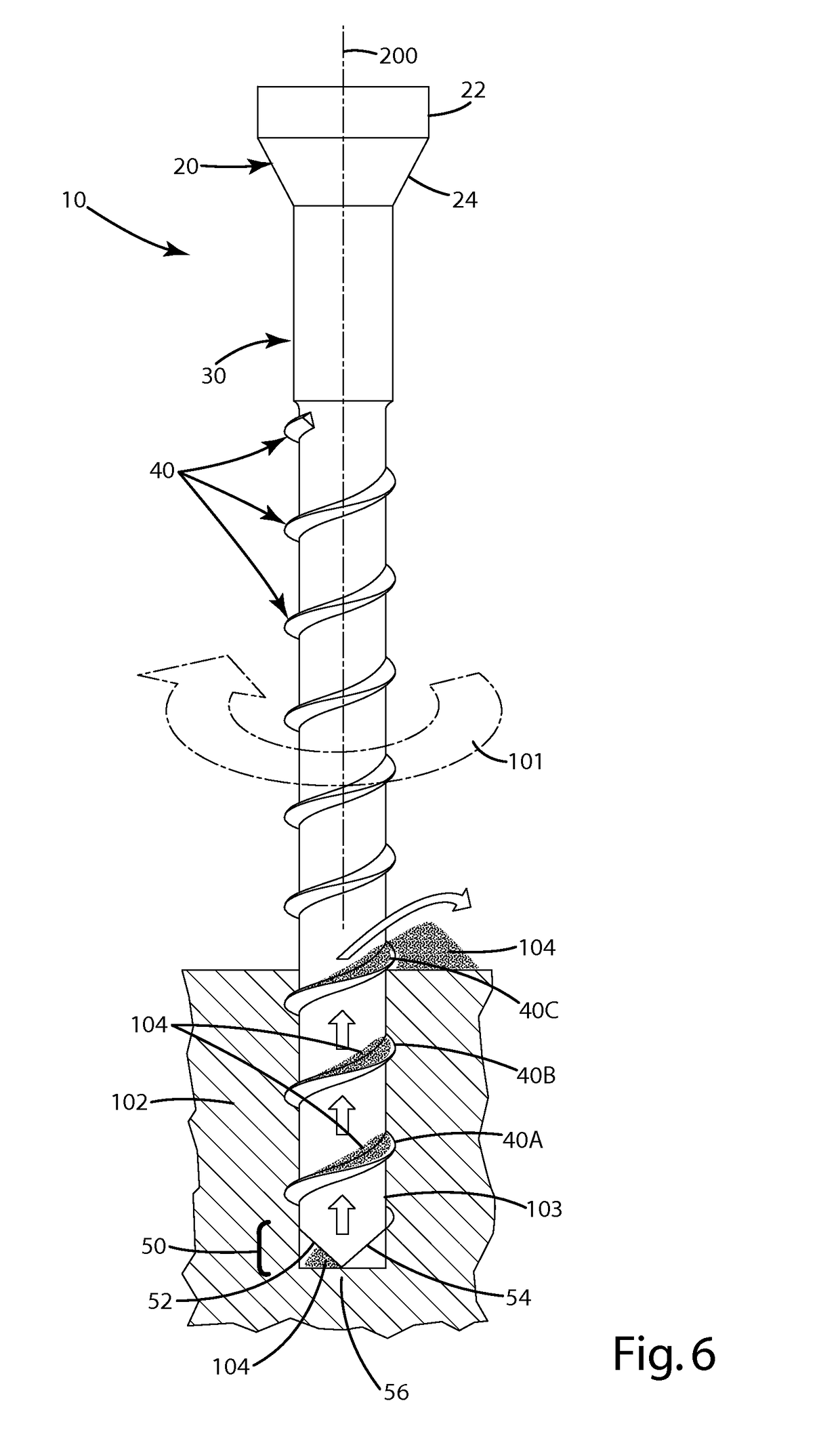Fastener, installation tool and related method of use
a technology of installation tools and fasteners, which is applied in the field of fasteners, can solve the problems of splintering of the lower corner of the board from the rest of the board, cutting or drilling into the wood, and the “side angled screws” are relatively unnoticeable by an observer looking straight down at the boards, so as to achieve the effect of convenient and consistent us
- Summary
- Abstract
- Description
- Claims
- Application Information
AI Technical Summary
Benefits of technology
Problems solved by technology
Method used
Image
Examples
Embodiment Construction
[0194]A current embodiment of a fastener is illustrated in FIGS. 1-6 and generally designated 10. The fastener can be in the form of a threaded fastener, and more particularly, a screw 10 including a head 20 and a shaft 30. The head can include an upper portion 22 and a lower portion 24. The upper portion 22 can be of a uniform diameter 23 (FIG. 3), which can range from about 0.197 to 0.202 inches in diameter, or can be of other dimensions if desired. The upper portion 22 of the head can be generally cylindrical and of a uniform diameter from the end of the head where the opening to the drive feature is located, to where the upper portion 22 begins to transition to the lower portion 24, where it tapers down to the shaft 30 of the screw 10. Optionally, the lower portion can be in the form of a frustoconical portion.
[0195]The upper portion 22 of the head 20 can define a screw drive feature, such as a star drive, a Phillips head drive or any other suitable drive. The screw drive featur...
PUM
 Login to View More
Login to View More Abstract
Description
Claims
Application Information
 Login to View More
Login to View More - R&D
- Intellectual Property
- Life Sciences
- Materials
- Tech Scout
- Unparalleled Data Quality
- Higher Quality Content
- 60% Fewer Hallucinations
Browse by: Latest US Patents, China's latest patents, Technical Efficacy Thesaurus, Application Domain, Technology Topic, Popular Technical Reports.
© 2025 PatSnap. All rights reserved.Legal|Privacy policy|Modern Slavery Act Transparency Statement|Sitemap|About US| Contact US: help@patsnap.com



